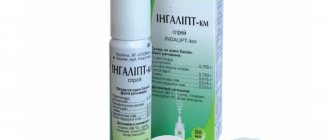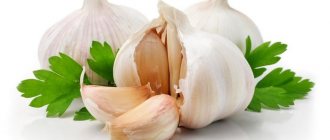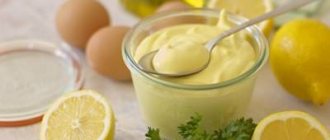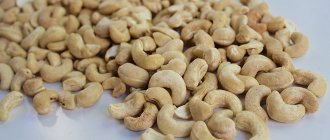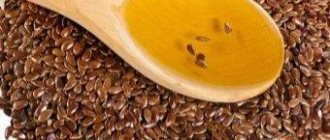With the birth of a baby, a woman’s life changes dramatically. You have to give up many familiar things, and sometimes simply because women do not know how to do this or that procedure correctly and whether it is contraindicated during breastfeeding.
Breastfeeding women are afraid to sunbathe in the open sun or in a solarium, explaining this with various superstitions and misconceptions. Breastfeeding in itself is not an absolute contraindication for swimming, sunbathing or playing sports. The main thing is to follow some reasonable safety rules.
The effect of ultraviolet rays on the skin
The human body is designed in such a way that we need sunlight. Under the influence of UV rays, vitamin D is produced, which promotes the absorption of calcium and plays an important role in the functioning of our body. In the cold months of the year, from a lack of sunlight, our skin becomes pale and prone to diseases, and our mood changes for the worse. In addition, moderate sunbathing is also beneficial for the baby.
However, overexposing your skin to UV rays has the opposite effect. Firstly, under prolonged exposure to ultraviolet radiation, the protective function of the skin is activated and it becomes thicker. Secondly, skin damaged by rays begins to age prematurely. Such unnatural aging is characterized by the appearance of spider veins and age spots. Thirdly, ultraviolet radiation negatively affects the growth of dividing cells, which can contribute to the occurrence of skin cancer.
How does a solarium work?
Sources of artificial lighting in solariums are erythema lamps that emit ultraviolet rays. They are made of special glass. The short part of ultraviolet radiation, which is dangerous to human health, does not penetrate through it.
Lamps produce two types of rays. UV-A rays have an aggressive effect on the skin, while UV-B rays are milder in this regard. The percentage of these rays in lamps is different. Under the influence of these rays, melanin is synthesized in skin cells, which gives it a golden tan. The final result depends on the following factors:
- number of lamps;
- their power;
- exposure time.
To avoid burns, the procedure should be carried out only under the guidance of a specialist.
Solarium is a platform equipped with erythema lamps emitting direct or diffuse ultraviolet rays. The flasks are made of glass, which does not transmit the short part of the ultraviolet spectrum (UV-C), which poses a danger to human health.
Tanning rules for nursing mothers
Is it possible for a nursing mother to sunbathe? It is possible, but subject to strict adherence to the following tanning rules:
- During breastfeeding, a woman's breasts are the most sensitive, so it should not be exposed to UV rays; it is necessary to cover the breast area. Simply put, topless tanning is contraindicated during this period.
- During breastfeeding, all recovery processes intensify. Therefore, if moles or birthmarks are exposed to sunlight, they will increase significantly in size.
- Be sure to use sunscreen with at least 25 PF protection, but do not apply it to the chest area so that the child does not accidentally taste the remaining cream. Carefully study the composition of the cream; it should be applied half an hour before going out into the sun. Do not forget that the strong smell of the cream may repel the baby, and he may refuse to breastfeed.
- Increase your time in the sun gradually. It is advisable to sunbathe during the safest hours: before 10 a.m. and after 5 p.m.
- Drink plenty of fluids while in the sun to reduce the risk of skin dehydration.
Properties of sunlight
When the body tans under moderate sun rays, the following benefits are obtained:
- Metabolic processes improve, namely, beneficial vitamins and microelements are absorbed faster.
- Blood circulation improves, cells are saturated with oxygen, waste and toxins are removed.
- The sun can treat some types of skin diseases, such as acne or psoriasis.
- Improves mood and well-being through the active production of hormones.
- The body's immune functions and resistance to pathogenic viruses increase.
- Stress and nervous tension are relieved, mood and overall well-being improve.
- The musculoskeletal system is strengthened through the active synthesis of vitamin D.
Only moderate sun exposure is beneficial for the body. That is why it is recommended to sunbathe under the canopy of trees or umbrellas.
Rules for tanning in a solarium for a nursing mother
Can a nursing mother sunbathe in a solarium? Here, the opinions of doctors differ: some consider this procedure inapplicable during lactation, others view it more favorably, subject to a number of restrictions. Of course, if there is no urgent need to visit a solarium, you should abandon this idea. However, if you decide to sunbathe in a solarium, then remember the following rules:
- Please check the cleanliness of the cabin before visiting.
- Start sunbathing for a minimum number of minutes (2-3) and observe how you feel.
- Cover the chest area as much as possible; it is better to sunbathe in a bra, since the skin here is highly sensitive during this period.
- Do not forget that any cosmetic product for tanning in a solarium can cause an allergic reaction, so take its choice seriously.
If after one or another method of tanning you feel that you have overdone it, take a break and provide your skin with peace and coolness.
About the benefits and harms of solarium
In the summer, it is better for nursing mothers to avoid solariums and sunbathe in the open rays of the sun.
In winter, you can go to the solarium, but the benefit from visiting it will only be aesthetic. Neither mother nor child will benefit from artificial UV rays, but there are plenty of risks. Not many people know that ultraviolet radiation from a solarium penetrates much deeper than from natural sunlight.
To avoid negative consequences, you must adhere to the following rules:
- be very careful about the cleanliness of the tanning booth;
- Reduce procedure time to a minimum. For a light tan, 3-5 minutes are enough;
- be sure to cover your mammary glands during the procedure;
- use protective creams carefully. Some of them may have a strong odor, which will affect the quality of breast milk. You should also pay attention to the composition of the cream. Remember, not only your health, but also the health of your baby depends on the quality of protective equipment.
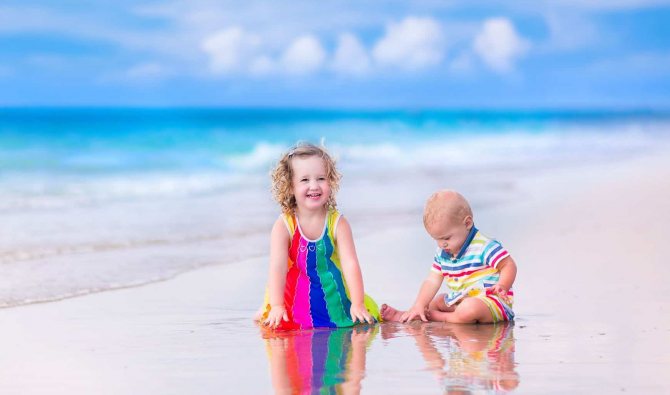
Is it possible for a nursing mother to sunbathe - conclusions
As we found out earlier, uncontrolled tanning is harmful to any person. However, ultraviolet radiation does not have any additional effect on the lactation process itself. Therefore, it is up to you to decide what is more important for a child: a beautiful mother or a healthy mother? And what is more important to you?
And if you still decide that you will sunbathe, then it is better to do it naturally, taking short-term sunbathing with your baby at “safe” times. Be healthy!
Yulia Maslova for the website Active Mom
Contraindications for visiting a solarium
Visiting the solarium is not recommended in the following cases:
- For chronic or serious diseases, such as heart failure or diabetes.
- During menstruation, pregnancy and breastfeeding, solarium is allowed only after consulting a doctor.
- In case of skin defects, such as age spots, papillomas or open wounds.
- While taking medications that increase skin sensitivity to ultraviolet radiation.
It’s also interesting What you need to take for a trip to the solarium, how to prepare, pros and cons, contraindications
What is better, a solarium or sunbathing while breastfeeding?
There is no fundamental difference between tanning in a solarium and sunbathing. Both types of exposure to the skin have advantages and disadvantages. A comparative analysis will allow a woman to choose independently which option is more optimal for her:
- tanning in a solarium takes less time than sunbathing;
- while sunbathing in the sun, you can simultaneously relax, swim in a pond and do other pleasant things;
- the cost of a procedure in a solarium is higher than tanning in the sun;
- You can sunbathe in the sun together with your child, the main thing is to protect the baby’s delicate skin from direct rays;
- In a solarium, you can control the intensity of UV radiation, which the sun does not allow you to do.
The negative effects of ultraviolet radiation in a solarium and under direct scorching sun are approximately the same. If we talk about the harm to breastfeeding, then there is no serious difference between these procedures. It should be remembered that tanning in a solarium and in the sun increases the risk of developing tumors on the skin. Especially often, new moles and age spots appear during simultaneous unstable hormonal levels - during breastfeeding.
Sources
- https://SoinPeau.ru/spa/procedury/mozhno-li-zagorat-kormyashhej-mame-na-solnce.html
- https://heaclub.ru/opasno-li-hodit-v-solyarij-pri-laktacii-chto-vybrat-na-grudnom-vskarmlivanii-solyarij-ili-avtozagar
- https://womanskincare.ru/zagar/dopustimo-li-zagorat-v-solarii-kormyashhej-mamochke.html
- https://vskormi.ru/mama/mozhno-li-zagorat/
- https://1child.ru/kormlenie-grudyu/mozhno-li-zagorat-kormyashhej-mame-na-solnce.html
- https://vseogv.ru/zdorove-i-pitanie-mamy-na-gv/zagar-na-solntse-i-solyarij-pri-grudnom-vskarmlivanii
[collapse]
What is dangerous about solar radiation?
The main danger comes from ultraviolet rays, which have a wavelength of 200 to 400 nanometers. This is a fairly large range, so it is conditionally divided into 3 parts, each of which has its own properties:
Ultraviolet A (UVA) rays
Their wavelength is 320-400 nanometers. Under their influence, a quick tan is formed (occurs within a few hours), which quickly disappears.
Ultraviolet B rays (UVB) 280-320 nanometers long
- The rays do not lead to the formation of a tan immediately, but after 2-8 hours. This tan reaches its maximum after 2-3 days; by 7 days, pigmentation remains in its place. This tan lasts quite a long time.
- The second property of UVB rays is antimicrobial. In this case, microbes are destroyed not only on the surface of the skin, but also in deeper soft tissues. Therefore, this radiation spectrum is used in medicine: for the treatment of neuritis, myositis, erysipelas, pustular inflammation, bedsores, trophic ulcers.
- The third property is stimulation of the production of vitamin D in the skin, which, by regulating calcium-phosphorus metabolism, increases the mechanical strength of bones.
- The fourth property is the effect on the endocrine organs: under the influence of UV radiation, the function of the adrenal glands and pituitary gland is stimulated. This increases the body’s resistance to stress, reduces inflammatory and allergic processes, and increases physical performance.
Ultraviolet rays of spectrum C (UVC), wavelength 200-280 nanometers
They penetrate deep into soft tissues, causing tissue proteins to fold and cell death. If it acts for a short time, it has a bactericidal effect and stimulates the immune system. It is also useful for skin diseases: neurodermatitis, psoriasis.
Ultraviolet rays are absorbed mainly by the stratum corneum of the epidermis, which consists of dead cells. The fact is that it contains a large amount of proteins and nucleic acids. They absorb most of the rays, preventing them from entering the deep layers where there are living cells, whose DNA mutation they can cause.
The second protective barrier to ultraviolet rays is the tan itself: special melanocyte cells produce the pigment melanin and transfer it to ordinary cells. Melanin is a kind of optical screen that absorbs ultraviolet rays. In addition, it is an antioxidant and binds free radicals that are dangerous to tissues.
There are no receptors in human integumentary tissues that would convey information to the brain if an excessive dose of ultraviolet radiation has been received. The heat received from these rays is not so great as to force a person to leave the sun. This is the danger of prolonged exposure to the sun, especially if you swim and sunbathe, when the skin will be exposed not only to direct ultraviolet rays, but also reflected from the water.
The effect of ultraviolet rays on the skin is cumulative. It has been proven that the longer and more often you sunbathe, the risk of skin cancer increases. In addition to melanoma, in high doses, UV radiation causes:
- immune suppression. Because of this, herpes rashes and cancerous skin changes occur. Constant high radiation reduces the effectiveness of vaccinations;
- sunburn;
- photosensitivity - increased sensitivity of integumentary tissues to the action of ultraviolet and visible rays (sun allergy);
- the appearance of skin changes characteristic of old age: wrinkles, loss of elasticity, dry skin (photoaging);
- non-melanoma tumors: basal cell carcinoma, squamous skin carcinoma;
- negative effect on the eyes: inflammation of the cornea (photokeratitis) or conjunctiva (photoconjunctivitis), “snow blindness”, pterygium (the appearance of a fold in the eye formed by an overgrown conjunctiva), cataracts (clouding of the lens), eye melanoma, basal cell carcinoma of the eyelids
